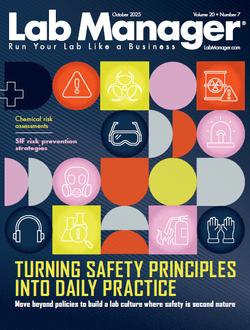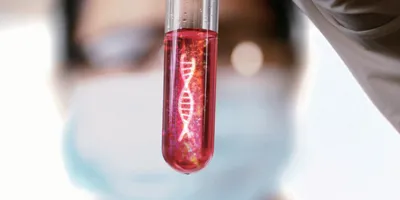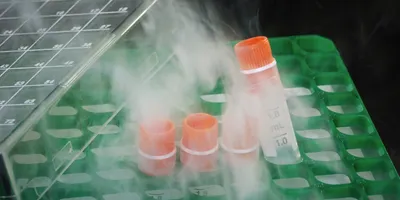A U.S. Department of Agriculture (USDA) scientist has found a "green" alternative to a type of fertilizer additive that is believed to contribute to the accumulation of heavy metals in waterways.
Ornamental nursery and floral crops require micronutrients like iron, manganese, copper and zinc. But fertilizers that provide these micronutrients often include synthetically produced compounds that bind with the micronutrients so they are available in the root zone.
 |
| ARS horticulturist Joseph Albano has found a greener alternative to a fertilizer additive that is believed to contribute to heavy metal accumulation in waterways. Agricultural Research Service |
The most commonly used compounds, known as chelating agents, are not readily biodegradable, and can extract metals from sediments. Their use is believed to add to the amounts of iron and other heavy metals that sometimes flow into or become soluble in waterways. Concerns in Europe about one, called EDTA, have prompted calls there for use of alternative chelating agents.
Joseph Albano, a horticulturalist with the Agricultural Research Service (ARS) U.S. Horticultural Research Laboratory in Fort Pierce, Fla., thinks he has found a "green" alternative for the floral and nursery crop industries. ARS is USDA's principal intramural scientific research agency, and this research supports USDA's commitment to agricultural sustainability.
Albano's alternative chelating agent is known as EDDS. It is a natural compound that is biodegradable and less likely to persist in the environment.
In a series of studies, Albano grew marigolds in standard soil-less potting media using fertilizers formulated with EDDS or one of two commonly used chelating agents: EDTA and DTPA. Each of the three treatments was chelated with iron so Albano could assess the effectiveness of EDDS as a fertilizer iron source.
The results showed that EDDS was a suitable chelating agent for use in fertilizers. There were no differences in plant growth or leaf-tissue iron levels among plants grown with iron-EDDS, those grown with iron-EDTA, or those grown with iron-DTPA fertilizers.
Iron-chelates, like iron-EDTA and iron-DTPA, degrade when exposed to light (photodegradation), so they are often stored in opaque containers that prevent exposure to sunlight. Albano also assessed iron-EDDS photodegradation and discovered that iron-EDDS degraded more quickly than iron-EDTA when exposed to light, which would contribute to its low persistence in the environment. Given how quickly it degrades, Albano recommends that iron-EDDS chelates also be stored in opaque containers.
The report, published in HortScience, was the first peer-reviewed study to evaluate EDDS as a chelating agent in fertilizers used in the production of a floricultural crop, according to Albano. The work is expected to encourage the use of EDDS as an environmentally friendly chelating agent in floral and nursery crop operations.
Read more about this research in the August 2012 issue of Agricultural Research magazine.
A U.S. Department of Agriculture (USDA) scientist has found a "green" alternative to a type of fertilizer additive that is believed to contribute to the accumulation of heavy metals in waterways.
Ornamental nursery and floral crops require micronutrients like iron, manganese, copper and zinc. But fertilizers that provide these micronutrients often include synthetically produced compounds that bind with the micronutrients so they are available in the root zone.
| |
| ARS horticulturist Joseph Albano has found a greener alternative to a fertilizer additive that is believed to contribute to heavy metal accumulation in waterways. Agricultural Research Service |
To continue reading this article, sign up for FREE to

Membership is FREE and provides you with instant access to eNewsletters, digital publications, article archives, and more.











